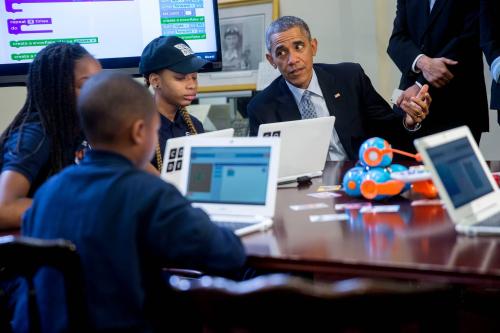Introduction
State pre-kindergarten programs have grown dramatically in the last two decades,
and much more attention is being paid to the school readiness of children. In 1980, there
were only 10 state programs; now at least 38 states and the District of Columbia have
one or more pre-kindergarten initiatives. By one estimate, these programs serve about
740,000 children, at a cost of over $2.5 billion in state funds. Most state programs are
part-day, part-year and targeted to a limited number of four-year-olds based on family
income or other risk factors for school success. Six states—Georgia, New Jersey, New
York, Oklahoma, West Virginia, and Wisconsin—have policies in place or a goal to
move toward universal access to pre-kindergarten, and other state leaders are
contemplating universal access as well.
In delivering their pre-kindergarten programs, states are taking one of two
principal approaches. States are choosing to:
Offer pre-kindergarten programs exclusively in public schools. A handful of
states limit delivery of all state-funded pre-kindergarten initiatives, either directly
or by subcontract, to the public schools. Community-based providers might be
used to provide extended-day services, but this is not part of the funding design of
the pre-kindergarten program.
Offer pre-kindergarten programs in schools and other settings, including
community-based child care. The vast majority of states with a program are
delivering pre-kindergarten in a mixed delivery model that includes schools and
community-based settings, which may include privately operated child care and
federally funded Head Start providers, among others. States may contract directly
with these providers or may allow schools to subcontract with them to provide the
pre-kindergarten program.


